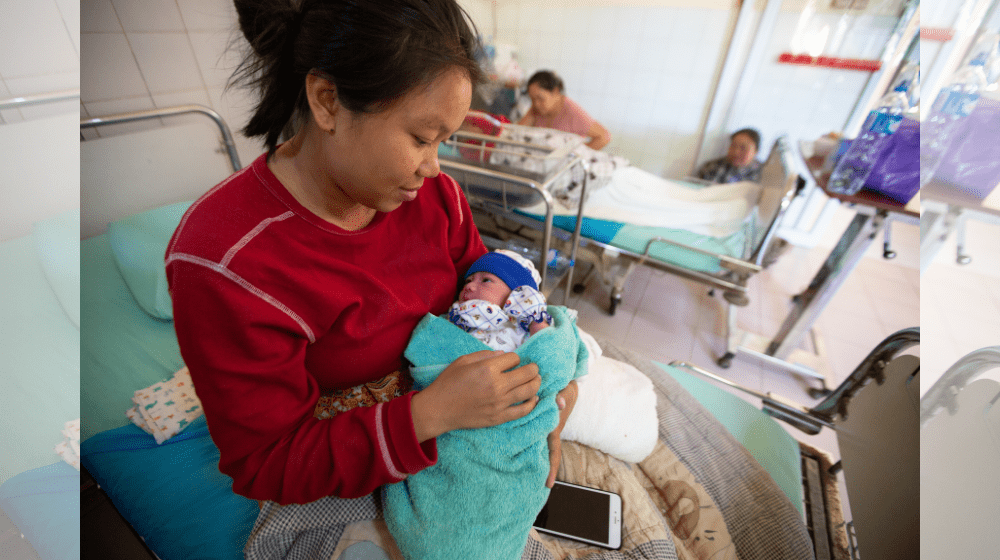The loss of life for
From 2000 to 2020, the report estimates that the number of pregnant women who died per 100,000 live births dropped from 579 in 2000, to 126 in 2020 – a reduction of 78.7% – one of the fastest falling rates in the world.
In contrast, in nearly all regions of the world, declining maternal mortality rates slowed or stagnated according to the report, Trends in maternal mortality, produced by the World Health Organization (WHO) on behalf of a group of United Nations entities, including UNICEF, UNFPA, and the World Bank Group.
WHO Representative Dr Ying-Ru Lo said: “Every mother’s life matters. This commendable, lifesaving progress reflects years of commitment and investment by the Government and partners. It combines better health services, facilities, and more highly skilled healthcare staff, increasing the number of mother’s accessing services. Equally important is strong leadership driving these efforts, coordinated by an effective National Reproductive, Maternal, Newborn, Child and Adolescent Health (RMNCAH) Committee, which WHO is proud to support.”
“However, one life lost remains too many, and with the challenges we face amid recovery from COVID-19, it is now more important than ever to continue efforts to further reduce this gap.”
Lao PDR has also achieved significant improvements in quality of care during pregnancy, labour, newborn care and childcare including better nutrition. The focus on midwives as a group that can provide more than 80 per cent of reproductive and maternal health care has borne fruit.
Essential to Lao PDR’s progress has been an increase in the number and quality of midwives, nurses and other skilled birth attendants. The Lao Social Indicator Survey shows a 23 per cent increase in deliveries assisted by a skilled birth attendant between 2011 and 2017. Equally important was the establishment of free maternal and child health services nationwide in 2013, later incorporated into the continuous expansion of the National Health Insurance scheme in 2015.
United Nations Population Fund (UNFPA) Representative, Mariam A. Khan said: “Lao PDR’s achievement is an important milestone towards achieving zero preventable maternal deaths by 2030. But, we must be cautious – we are yet to accurately measure the impact of the COVID-19 pandemic on maternal heallth. During this time, the world collectively struggled to ensure continuity of family planning and safe delivery services, with increases in maternal and newborn mortality as a tragic consequence. Intensified efforts are required to address setbacks, and our collective efforts are needed to improve quality of care for all pregnant women, and ensure we reach those who struggle to access and afford care - those most left behind.”
Increased community engagement by the Government and development partners has also played a crucial role, improving trust in the health system among diverse communities – ensuring women feel comfortable – as well as improvements in accessibility for women during pregnancy and labour.
Dr. Pia Rebello Britto, UNICEF Representative to Lao PDR, said: “No mothers should die while giving birth to life. This new data is proof of the tremendous efforts that you have made over the past two decades by Lao PDR to ensure that every woman can have access to affordable, high quality maternal and newborn care services. UNICEF heartily congratulates Lao PDR on this incredible achievement and will continue to work closely with Lao PDR to end the preventable deaths of mothers and newborn.”
WHO, UNFPA and UNICEF remain committed to supporting Lao PDR to build on the significant progress and address the challenges that remain – including accessibility, equity and healthcare service quality, especially as the COVID-19 pandemic is expected to have brought a drop in the uptake of services.
ENDS
Read Trends in maternal mortality
Note: Maternal mortality is difficult to measure. CRVS and health information systems in most developing countries are weak, and do not provide an accurate assessment of maternal mortality. Even estimates derived from complete CRVS systems, such as those in developed countries; suffer from misclassification and incompleteness of maternal deaths. Continuous data collection is required for calculation and release of maternal mortality estimates every 3-5 years.


